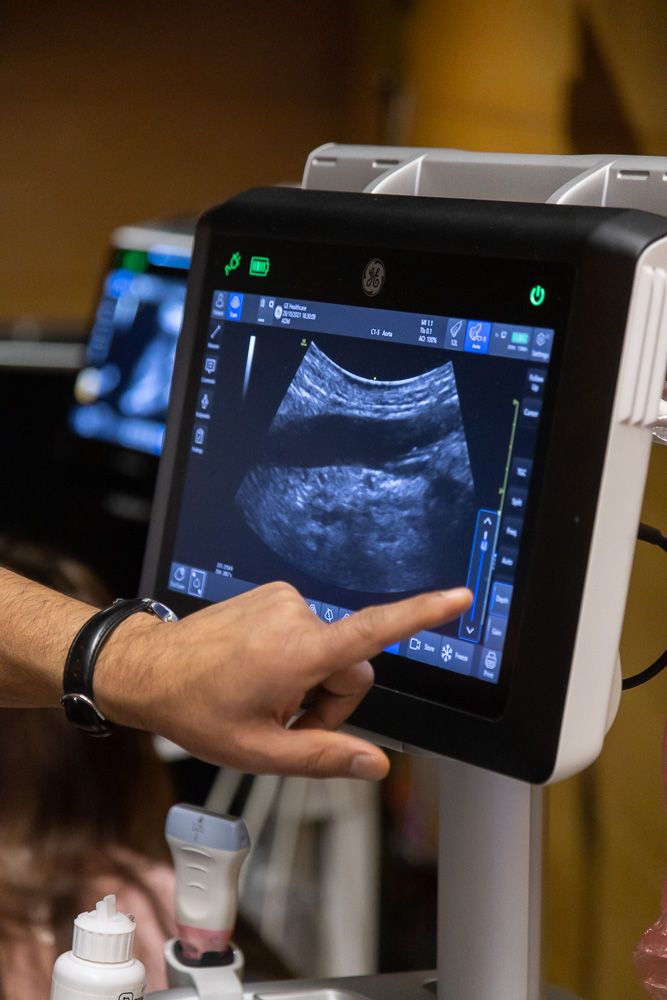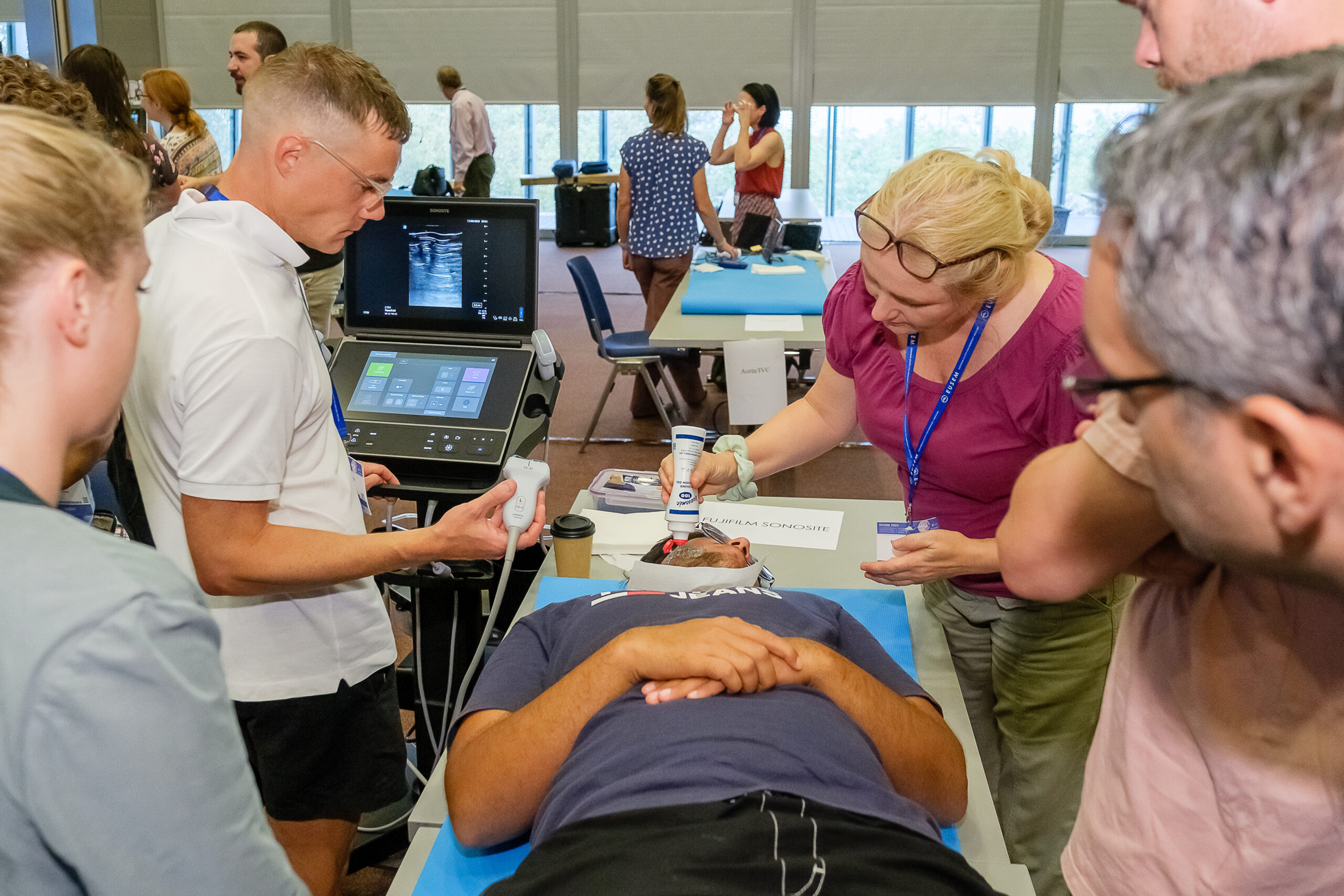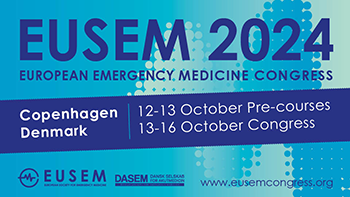
Emergency Ultrasound Pre-course
This pre-course is offered in one and half day format on:
Saturday 12 October, 08:30 -18:00 CET
Sunday 13 October, 08:30 – 13:30 CET
Venue: Bella center, Copenhagen, Denmark, Room 180+181
A new course format has been introduced for this year. Instead of having separate basic and advanced ultrasound pre-courses, participants will now have the opportunity to select three consecutive modules for the 1.5-day course.
For who
Emergency Physicians (consultants, trainees, Emergency Medicine Physician Assistant’s)
Module 1 – Focused Cardiac Ultrasound (basic)
In this module, designed specifically for emergency physicians, we explore the theoretical and practical aspects of cardiac ultrasound. Participants will learn basic anatomy and views, work on hand-eye coordination, interpret ultrasound findings comparing normal and pathological images, and integrate results into clinical reasoning in time-sensitive pathologies.
Learning Objectives
- Getting familiar with basic cardiac views and describing the relevant anatomy of every view: subcostal, parasternal long and short axis, apical four, five and two chamber view
- Name different regions of the left ventricular muscle and describe different basic ways to assess the contractility
- Compare and measure chamber size in A4C view
- Assess left ventricular contractility in different views by eyeballing
- Assess the size of the right ventricle and motion of the septum in different views
- IVC measurement pitfalls and interpretation
- Pericardial effusion and tamponade
Module 2 – Ultrasound in shock
This module aims to provide a structured approach with the use of bedside ultrasound in the shocked patient. You will learn the sonographic techniques, image interpretation and most importantly the incorporation of scanning findings in the clinical setting and decision-making of the patient with undifferentiating shock.
Learning Objectives
Upon completion of this module, the participants will be able to:
- Acquire and interpret sonographic images by performing a multi-system scanning in order to diagnose the etiology of shock
- Differentiate the types of shock according to the sonographic findings (cardiogenic, obstructive, hypovolemic, distributive)
- Assess fluid status (volume assessment and volume responsiveness)
- Identify pathologic findings through image review and hands-on practice
Module 3 – Focused Cardiac Ultrasound (advanced)
This advanced module focuses on specific applications of cardiac ultrasound in emergency medicine. Participants will delve into advanced techniques, mastering , including comprehensive, semi-quantitative and even quantitative assessment of cardiac function, identification of structural abnormalities, and evaluation of hemodynamic status. By the end of the course, participants will be taught on tips for integrating all of these applications into their daily clinical practice for critical decision-making in urgent scenarios.
Learning Objectives
- Assess left ventricular contractility in different views by eyeballing, MAPSE, EPSS and Teichholz
- Assess the mitral valve in B mode and with color for severe mitral regurgitation
- Assess right ventricular contractility in different views by chamber size, TAPSE, septum motility and color over the tricuspide valve
- Measure LVOT VTI and calculate CO and its changes during passive leg raise test
- Learn how to perform an echo guided pericardiocentesis

Module 4 – Ultrasound in Abdominal Emergencies
Point of care abdominal ultrasound is one of the most useful tools to speed up the work up of the often undifferentiated abdominal pain patient in the emergency department and on the other hand to reduce the number of CT scans as well as negative laparoscopies. In this module we going to explore how and when it is useful to use the ultrasound in abdominal emergencies in a case-based approach.
Learning Objectives
- How to assess a patient with abdominal pain in right upper quadrant?
- How to assess for bowel perforation and free intraperitoneal air?
- What to look for in a patient with flank pain?
- How to look for small bowel obstruction?
- How to look for small bowel obstruction?
- How to find an inflamed appendix?
- How to assess a patient with pain in the left lower quadrant?

Module 5 – PoCUS for lung emergencies and fractures of the chest – a hype and must for all physicians
Lung and chest wall sonography is the newest discipline of point-of-care ultrasound for common and life-threatening emergencies. Its diagnostic accuracy far surpasses that of the stethoscope and chest x-ray. It is not only about to replace both, but also represents a valid alternative to computed tomography for several indications. Our workshop is intended for all those who do not want to miss out on this development. The only prerequisites are basic knowledge and familiarity with ultrasound knobology.
Learning Objectives
Physical background and the sonoanatomy:
- Basic ultrasonic tools to examine accurately the lung and the chest wall. The focus is on the pleural line, horizontal reverberations and mirror artifacts, lung sliding, pulmonary pulse, costodiaphragmatic recess, ribs and sternum as well as most important pitfalls using these ultrasound applications
- Examination technique, the settings in B-mode, M-mode and color Doppler for the optimal visualization of the sonoanatomy and the avoidance of pitfalls
- Interactive cases visualising pathologies, based on two forms of visualization: directly visualizable subpleural parenchymal changes and indirectly visualizable interstitial pathologies and aeriation of the lung by vertical artifacts with an update on the current state of knowledge, the nomenclature and ultrasonic presentation. In detail:
Pneumothorax - Pleural effusion
- Pleuritis
- Lobar pneumonia
- Pulmonary embolism
- Atelectasis
- Rib and sternal fractures
- Pulmonary edema
- Pulmonary contusion
- Pearls and pitfalls with the experts: the experts are going to discuss pearls and pitfalls of the different scanning techniques with the focus on the implementation of the scans in the clinical practice
Module 6 – Ultrasound Guided blocks in Trauma
This module will provide an introduction to ultrasound guided nerve and fascial plane blocks deemed of high value to emergency physicians in their daily practice. By providing a foundation to work on, the participant will then be able to apply the principles and skills to any other blocks that are useful in their scope of practice.
Learning Objectives
- Foundations of regional anaesthesiae – know the nerve, see the nerve, see the needle, do the block
- Practice needling technique including some challenges to test your skills!
- Blocks covered in the module with practical sessions
- Fascia Iliac compartment blocks for hip fractures – suprainguinal and infrainguinal
- Femoral nerve
- Popliteal
- Chest wall blocks
- Serratus Anterior Plane
- Erector Spinae Plane
- Overview of upper limb regional anaesthesiae options
Module Leads
- Focused cardiac basic and advanced: Tomas Villen (SPA)
- Ultrasound guided blocks in trauma: Chris Yap (UK)
- POCUS for lung emergencies and fractures of the chest: Joseph Osterwalder (SUI)
- Ultrasound in shock: Effie Polyzogopoulou (GRE)
- Ultrasound in abdominal emergencies: Senad Tabakovic (SUI)
Programme
| Saturday Morning | Module 1 & 2 |
| Saturday Afternoon | Module 3 & 4 |
| 8:30-10:30 | Lectures and scanning |
| 10:30-11:00 | Coffee break |
| 11:00-13:00 | Lectures and scanning |
| 14:00-15:30 | Lectures and scanning |
| 15:30-16:00 | Coffee break |
| 16:00-18:00 | Lectures and scanning |
| Sunday Morning | Module 5 & 6 |
| 8:30-10:30 | Lectures and scanning |
| 10:30-11:00 | Coffee break |
| 11:30-13:30 | Lectures and scanning |
Faculty
Course Director: Dr. Senad Tabakovic, (CH)
Co-Directors: Dr. Paul Overbeeke, (NL) Dr. Effie Pol, (GRC)
Focused cardiac basic and advanced: Dr. Tomas Villen (SPA)
Ultrasound guided blocks in trauma: Dr. Chris Yap (UK)
POCUS for lung emergencies and fractures of the chest: Dr. Joseph Osterwalder (SUI)
Ultrasound in shock: Dr. Effie Polyzogopoulou (GRE)
Ultrasound in abdominal emergencies: Dr. Senad Tabakovic (SUI)
Registration
Each participant must select three modules: 1 module on Saturday morning; 1 module on Saturday afternoon; 1 module on Sunday morning.
The cost for this course is:
€ 350 for physicians
€ 250 for nurses, paramedics, trainees and students
Note: fees for individual modules is not offered, you must register for the whole course.
Please register through your MyEUSEM account by clicking on the EUSEM Congress registration button. From the Pre-courses tab you can select the pre-courses you would like to join.
